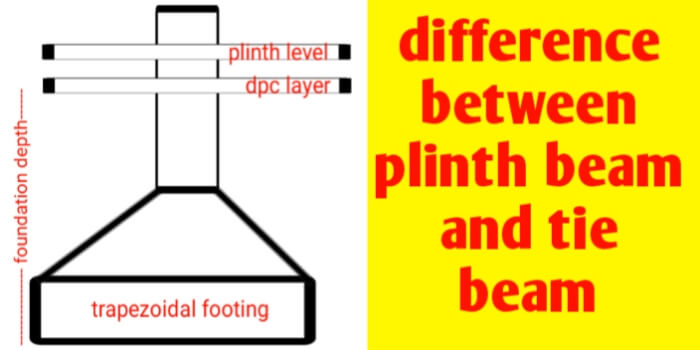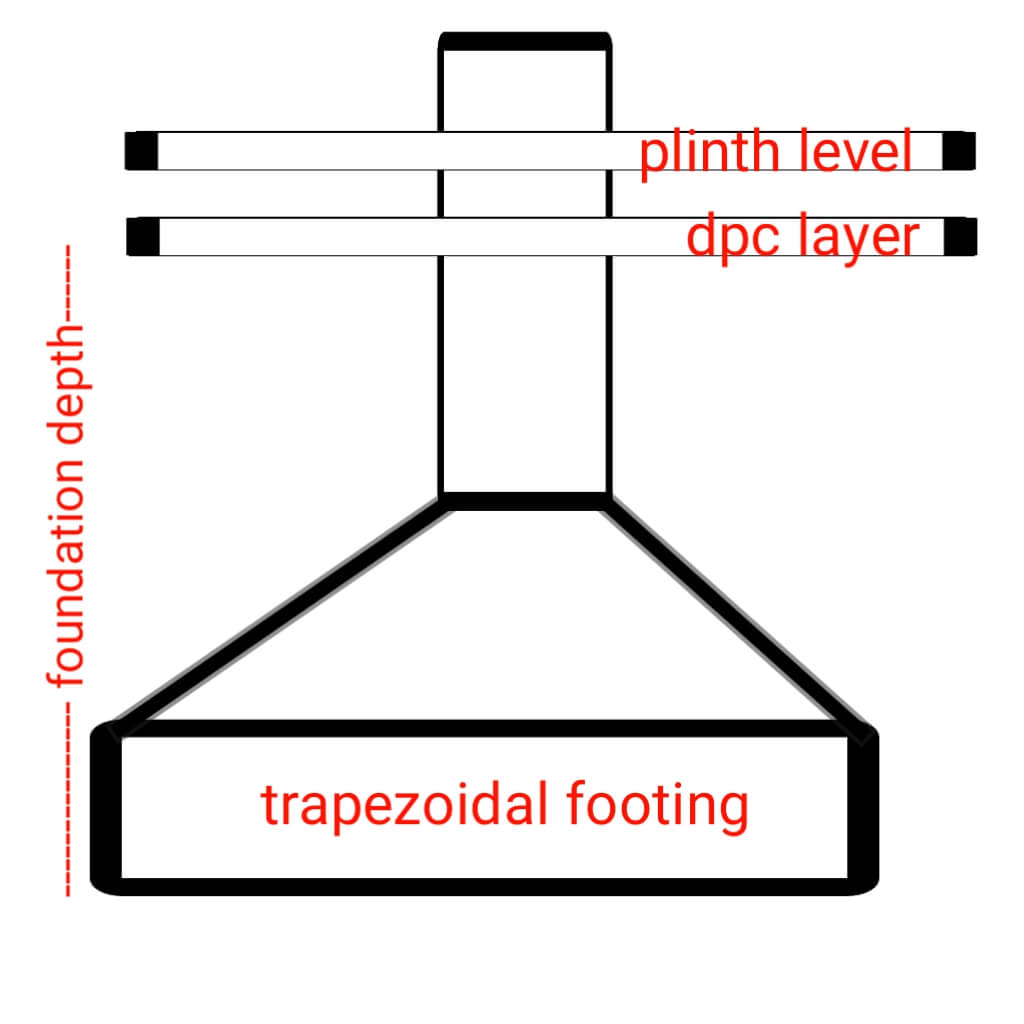What is difference between plinth beam and tie beam,What is plinth beam and tie beam ,hi guys in this article we know about what is difference between plinth beams and tie beam and what is plinth beam and tie beam.
Actually all beam that provided in frame structure of building construction work is known as tie beam whether it will be provided in Super structure and sub structure of building, when tie beam is provided at ground level that tie beam is known as plinth beam.
And that means only difference in that height at which they are provided plinth beam is provided only at plinth level but tie beam is provided anywhere above the plinth level and below its.General words we can say that plinth beams is type of tie beam that’s divide the superstructure and substructure of building.
Now let us discuss about some topics which help you to understanding what is difference between plinth beams and tie beam.
◆You Can Follow me on Facebook and Subscribe our Youtube Channel
You should also visits:-
1)what is concrete and its types and properties
2) concrete quantity calculation for staircase and its formula

1) plinth level :- it is the level of ground surface where substructure of building is end and Super structure of building work is starts. It means plinth level of building construction work divide the superstructure and substructure of building.so we can says that plinth level is top most part of ground level.
2) what is plinth beam :- plinth beams is type of tie beam which is provided at plinth level of ground surface. And it is top most part of substructure at ground level and it is starting point of superstructure of building.
And now discuss about what is the benefit of providing plinth beam at the ground surface and what is the function of plinth beam

Function of plinth beam providing in structure
1) all the beam have same function their uniformly distributed horizontal load coming from wall and slab distribute to the column and column transfer its load to the ground footing and ground footing transfer its load safely to the bed of soil. So plinth beam load carrying element
2) plinth beam is also of flexural structural member that causes bending moment when load is acting on it
3) plinth beam act as tie beam to connect all the the compressive supportive structure like column at plinth level or ground surface
4) plinth beam prevent from cracks in the brick wall by safely transfer the load to the supportive compressive structure like column
5) plinth beam also help in differential settlement of sand below the ground surface. Sand start settling particles process over a time under the the soil below the plinth level. So plinth beam prevents from differential settlement.
What is tie beam and their purpose
The Beam which connect the compressive frame structure of building like column, trusses, cap of pile Foundation above the ground or under the ground is known as tie beam.
Let the confusion clear that tie beam is not used only in superstructure for connecting compressive frame structure like column it can be also used in substructure for connecting under lying pile cap Foundation or if Foundation depth is more, then it is also necessary to connect all the column member under the ground or on the surface of ground below the plinth level if height of plinth level is more than 3.5 feet from the ground. And other two types of beam is also present that is primary beam and secondary beam
1) primary beam :- those type of horizontal beam which connecting column directly and make column -beam jointsand.and it will transfer safely the load of slab and load of secondary beam if it is present. Primary beam is also type of tie beam
2) secondary beam :-type of horizontal beam which connecting to primary beam directly and not connected to column directly and it transfer the load to the primary beam and do not directly transfer the load to the column. It is also type of tie beam.
Both type of primary beam and secondary beam provided at roof level below the slab.
Tie beam is provided under the ground for connecting column, and at plinth level known as plinth beam and at lintel level known as lintel beam and at roof level known as roof wall beam.All have same function to transfer safely uniformly distributed horizontal load to the column. And tie beam provides resistance against shear force and bending moment can prevent from cracking and failure of structure
What is difference between plinth beam and tie beam
Now come to the point what is difference between plinth beams and tie beam by understanding this article conclusion is that there is no any major difference between plinth beams and tie beam only difference in their height and where it is provided. The type of beam which is provided at plinth level on the level of ground surface is known as plinth beam and the beam which is provided anywhere weather it will provided in substructure or superstructure of building construction that is known as tie beam.
And function of plinth beams and tie beam is same so do not confuse with plinth beam and tie beams have major difference, it has only difference in their height and where they provided and their name.
And I hope you all understand this topics and your confusion will be clear difference between tie beam and plinth beam. Thanks to all.